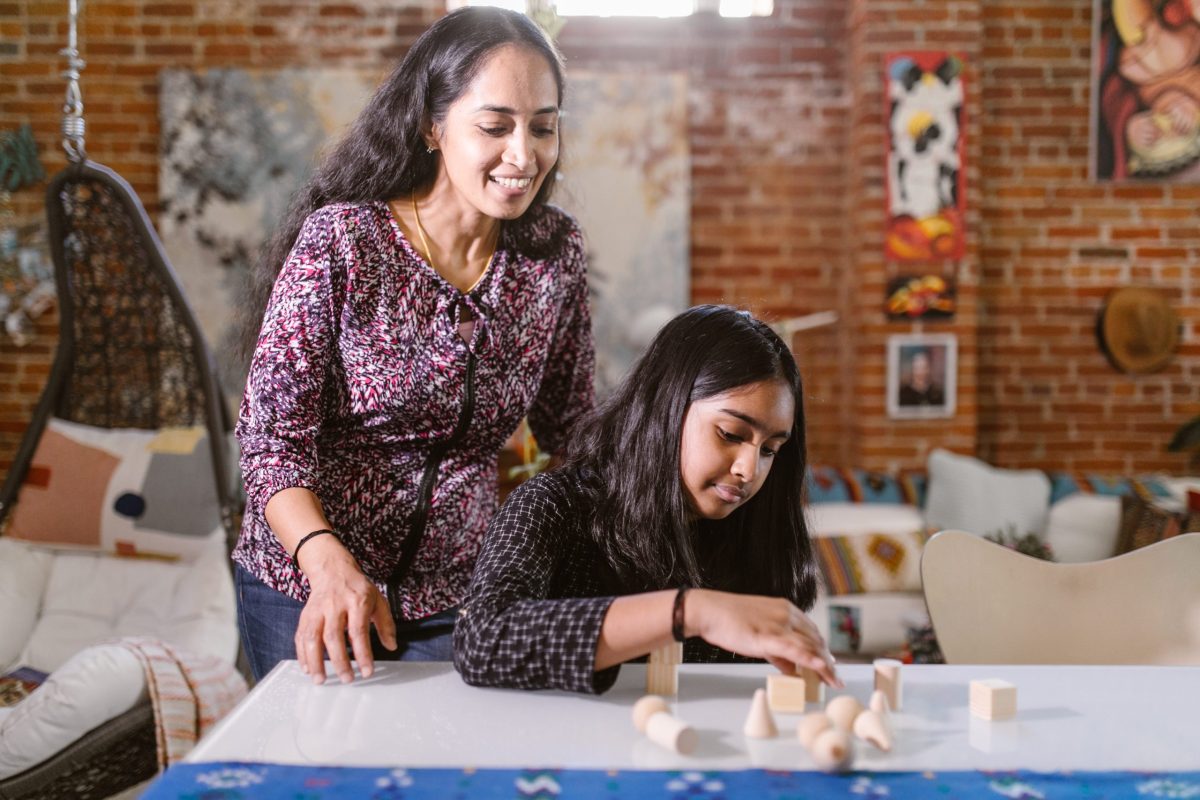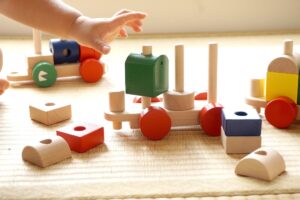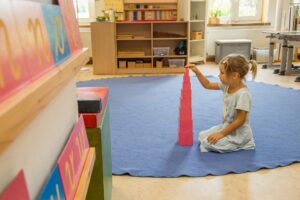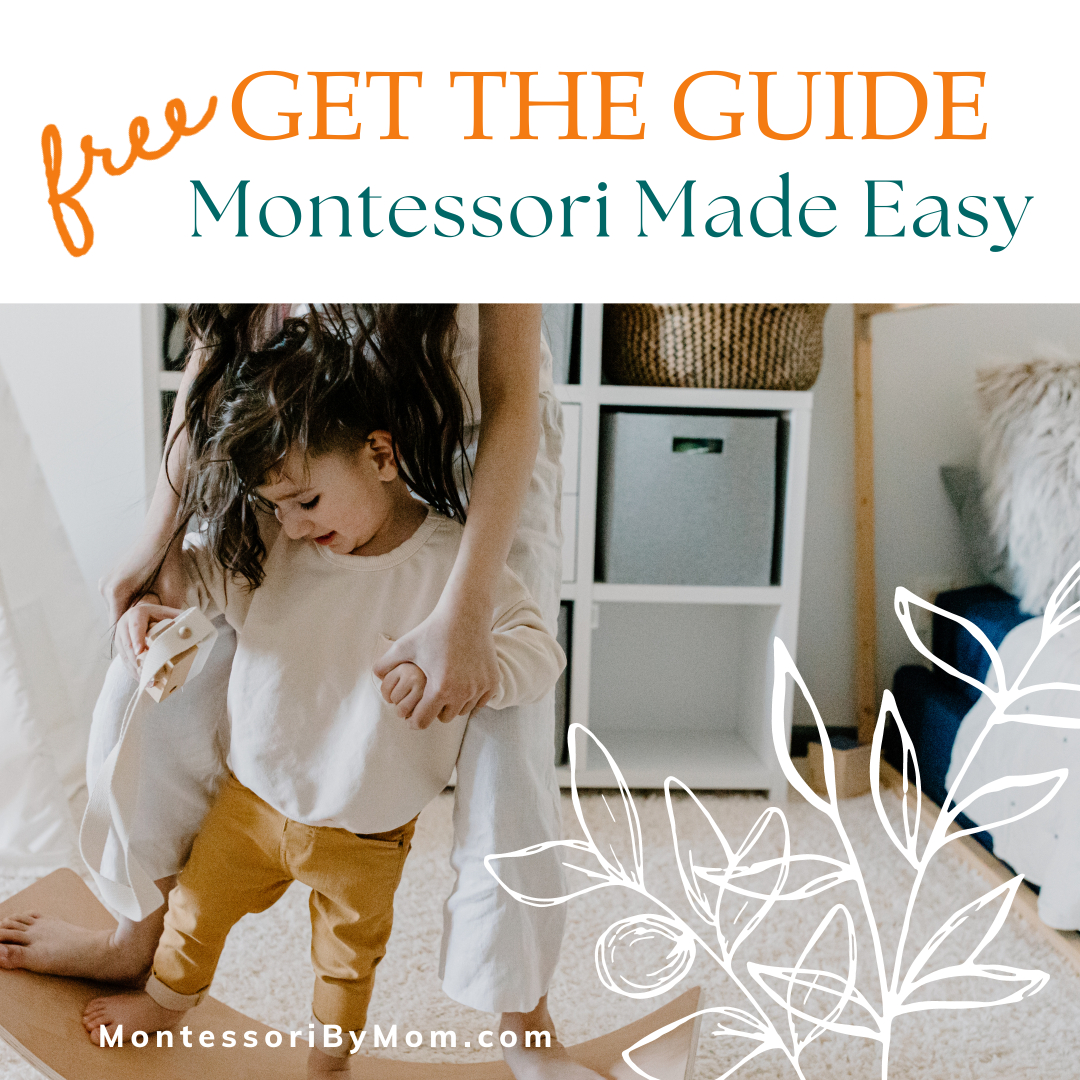Montessori Principles
Montessori parenting and education are about so much more than beautiful playrooms and wooden toys! While Maria Montessori developed groundbreaking educational materials and approaches, she left perhaps an even greater gift for modern parents: Montessori principles.
These principles guide parents, teachers, and caregivers to interact with children in a way that is respectful, peaceful, and developmentally appropriate. Dr. Montessori taught these principles after her extensive scientific observation of children, their inner lives, and their development.
We love Montessori principles because any parent can apply them in any situation. You don’t need to spend a penny to begin implementing these principles. You can start today!
While we could write a book about Montessori principles — Dr. Montessori herself wrote 15 books on her method and approach — we know that busy parents are often short on time.
We’ve done the research for you, and in this article, we’ll share several key Montessori principles that are must-knows for every adult who wants to begin interacting with children the Montessori way. We’ll also point you in the right direction for further reading for any principle you’d like to learn more about.
If you’re ready to develop a better relationship with your children based on tried-and-true, developmentally-sound principles, you’re in the right place. Let’s dive in!

The Absorbent Mind
Dr. Montessori’s method revolves around the idea that all children have an absorbent mind. Unlike adults, young children can effortlessly absorb knowledge, language, and culture from their environment. Dr. Montessori observed that children took to learning every subject with ease, “spontaneously, without any fatigue.”

Understanding the absorbent mind of a child fundamentally changes how we view, interact with, and educate children. It’s why Montessori parents focus on preparing intentional environments for children, involving their children in their culture, and following the child’s lead.
To learn more about this principle and how it factors into the Montessori approach, read our article on the absorbent mind.
The Prepared Environment
Another key Montessori principle is the importance of the prepared environment. Since we know children absorb whatever is in their environment, we want to make their environment loving, beautiful, engaging, and calm.
 A prepared environment at home will look different for every child and every family. The key principle to understand is that, in many ways, the environment is the teacher.
A prepared environment at home will look different for every child and every family. The key principle to understand is that, in many ways, the environment is the teacher.
Creating an environment with order, structure, beauty, and nature can all help our children develop to their limitless potential.
Learn more about creating a Montessori learning environment on our blog.
Freedom Within Limits
Dr. Montessori observed that even the youngest children thrive when given freedom within limits. “Let us leave the life free to develop within the limits of the good,” she wrote. Giving a child freedom within limits means offering them the freedom they’re developmentally prepared for, but not more.
 Giving children freedom allows them to develop independence, build self-confidence, and learn about themselves. Limits and boundaries are key to developing healthy relationships, maintaining a safe home, and helping children feel secure.
Giving children freedom allows them to develop independence, build self-confidence, and learn about themselves. Limits and boundaries are key to developing healthy relationships, maintaining a safe home, and helping children feel secure.
What does this look like in practice? Parents may give children the freedom to choose what to wear within the limits of clothes that are weather appropriate. They may give children the freedom to choose what to eat within the limit of a few options the parent has prepared.
Take a deeper dive into freedom within limits and how to apply this principle at home by reading this article.
The Prepared Adult
Just like the prepared environment is key to helping children thrive, another Montessori principle is the importance of the prepared adult. A prepared adult is a calm, confident leader who offers a secure base for children. Nobody is perfect, but Montessori parents understand the importance of their role and  strive to educate and prepare themselves.
strive to educate and prepare themselves.
Parenting isn’t easy. It often forces us to overcome our weaknesses, develop a much higher level of patience, and become more intentional in how we approach life. However, this effort is well worth it and allows us to show up as the best version of ourselves for our children.
Interested in learning more about how you can become a Montessori prepared adult? Check out this article.
Montessori Modeling
Modeling is a key principle in Montessori environments. It can best be summed up by this quote: “Children are great imitators, so let’s give them something great to imitate.”

In Montessori classrooms, teachers model how to use materials. But even more importantly, they model how to respectfully communicate, regulate their emotions, and care for their environment.
At home, parents can do the same by modeling the behaviors we’d like to see our children develop. We can stop and take a deep breath when we get angry rather than taking it out on someone else. When someone has wronged us, we can still speak respectfully of them. We can keep trying even when something frustrates us.
This article is a great resource to learn more about Montessori modeling.
The Montessori Principle of Play
In Montessori, play is the work of the child. Through play, children learn, create connections, and even process their emotions. Play isn’t just a way for children to busy themselves, but a crucial way they develop their minds and bodies.
 This understanding makes Montessori adults the guardians of play. Our job is to protect and respect our child’s play, ensuring they have the time and space they need for uninterrupted playtime.
This understanding makes Montessori adults the guardians of play. Our job is to protect and respect our child’s play, ensuring they have the time and space they need for uninterrupted playtime.
In Montessori, adults also follow a child’s lead when it comes to play. Instead of telling a child how to play or what to play with, we let them take the lead, trusting that they know their play needs better than anyone else.
Read more about the Montessori principle of play in this post.
The Montessori Principle of Independence
 The Montessori method is well-known for its emphasis on independence. This doesn’t mean that we force children to do anything before they’re ready, but that we honor a child’s strong desire for age-appropriate independence.
The Montessori method is well-known for its emphasis on independence. This doesn’t mean that we force children to do anything before they’re ready, but that we honor a child’s strong desire for age-appropriate independence.
Adults prepare Montessori environments with a child’s independence in mind, making toys, clothes, and furniture accessible for the smallest members of the household. Montessori children participate in practical life activities from a young age with size-appropriate tools for little hands.
Allowing children to independently make decisions gives them the invaluable practice they’ll need for the rest of their lives. These small steps to foster independence can be empowering, rewarding, and educative for young children.
We discuss the Montessori principle of independence further in this blog post.
The Montessori Principle of Observation
Dr. Montessori created her method based on countless hours of observation of children. Observation wasn’t just important for creating the Montessori method, but for every adult who wants to implement it.
 In Montessori, teachers and parents mindfully prepare the environment based on carefully observing the needs of the children who use it.
In Montessori, teachers and parents mindfully prepare the environment based on carefully observing the needs of the children who use it.
At home, parents can observe what kind of skills their child is working on and then prepare activities that help them hone these skills. They can observe what their child may be struggling with and adapt the environment to help their children thrive. When a child has a troubling behavior, the adult can first observe to see what may be causing it.
Learn more about the Montessori principle of observation, and specific methods that may help you observe your children, in this article.
The Montessori Principle of Focus
The Montessori approach differs from many mainstream approaches in its emphasis on respecting a child’s focus. Dr. Montessori observed that even the youngest children could concentrate on tasks for a long time if it was something the child was interested in.
 In Montessori, we aim to guard this focus and concentration. If a baby is focusing on the way light bounces off the wall, we don’t try to direct their attention to us instead. If a child is working hard to figure something out, we avoid swooping in and solving the problem for them.
In Montessori, we aim to guard this focus and concentration. If a baby is focusing on the way light bounces off the wall, we don’t try to direct their attention to us instead. If a child is working hard to figure something out, we avoid swooping in and solving the problem for them.
By respecting a child’s focus, we allow them to develop the ability to concentrate, build their internal motivation, and follow their interests.
To learn more about developing focus in children, visit our article on the Montessori principle of focus.
The Montessori Principle of Respect
Dr. Montessori said learning to respect children was “essential and fundamental, something we should learn from the first day.”  Contrary to what many adults believed in her day (and even ours), she believed children were full beings deserving of respect.
Contrary to what many adults believed in her day (and even ours), she believed children were full beings deserving of respect.
On the topic of respect, Dr. Montessori taught that children are similar to adults in that they desire companionship, equality, trust, and to be undisturbed in their work.
Parents can respect children by listening to their viewpoints, honoring their work, and trusting that they know how to develop in their perfect timeline. Respect empowers children with confidence and independence and allows them to develop healthy relationships with their parents and everyone else in their lives.
We cover the Montessori principle of respect more thoroughly in this blog post.
The Montessori Principle of Hands-On Learning
Hands-on learning is key to every aspect of the Montessori method, especially Dr. Montessori’s famous materials. Dr. Montessori wrote, “What the hand does, the mind remembers.”

Children learn best through physical, tangible experiences with the world around them. For example, they learn to count best with physical manipulatives rather than by memorizing numbers. They learn letters best when physically feeling and hearing them with something like sandpaper letters, not flashcards or a tablet screen.
In Montessori schools and homes, parents and teachers prioritize hands-on experience as it allows children to better remember what they learn and engage more fully in the learning process.
Learn more about the Montessori principle of hands-on learning here.
The Montessori Principle of Child-Directed Work
One of Dr. Montessori’s most famous teachings is to “follow the child.” In Montessori classrooms, children can choose how to spend their time and what to work with. Adults trust that children know exactly what they need for their development and will seek it out spontaneously.
 To apply the principle of child-directed work at home, parents follow their children’s lead. They guard their children’s free time, observe their children and prepare the environment accordingly, and follow their children’s interests.
To apply the principle of child-directed work at home, parents follow their children’s lead. They guard their children’s free time, observe their children and prepare the environment accordingly, and follow their children’s interests.
Rather than pushing or bribing our children to do what we think they need, we can trust them and let them work and play with what they choose.
If you’d like to read more about the Montessori principle of child-directed work, this blog post is a great place to start.
Applying Montessori Principles
We hope that applying these Montessori principles can enhance your relationship with your children and fill your home with more peace and understanding.
It may feel overwhelming to read all these principles at once. However, keep in mind that you don’t need to change everything immediately to see positive changes in your home. Gradually implementing the principles that resonate the most with you can make a big difference, even if you’re not perfect.
Which Montessori principle has made the biggest difference in your life? Let us know in the comments!




0 Comments